Eleven-minute race for food: how aid points in Gaza became 'death traps' - a visual story
 Hundreds of people have died while seeking food since delivery was taken over by the Gaza Humanitarian Foundation in May. But Palestinians facing extreme hunger have no choice but to take the risk
https://www.theguardian.com/global-development/2025/jul/22/food-aid-gaza-deaths-visual-story-ghf-israel
Hundreds of people have died while seeking food since delivery was taken over by the Gaza Humanitarian Foundation in May. But Palestinians facing extreme hunger have no choice but to take the risk
https://www.theguardian.com/global-development/2025/jul/22/food-aid-gaza-deaths-visual-story-ghf-israel

Raed Jamal sends the message shortly after he returns, empty-handed, from an aid distribution point to his tent in the al-Mawasi displacement camp in south-west Gaza. “The tanks came and started firing. Three boys near me were martyred,” says the 36-year-old, who has four children. “I didn’t even get anything, just two empty boxes.” Jamal’s journey involved a long walk to and from a former residential neighbourhood bulldozed by Israeli forces and turned into one of four militarised aid distribution centres run by the Gaza Humanitarian Foundation (GHF), which is based in Delaware in the US.
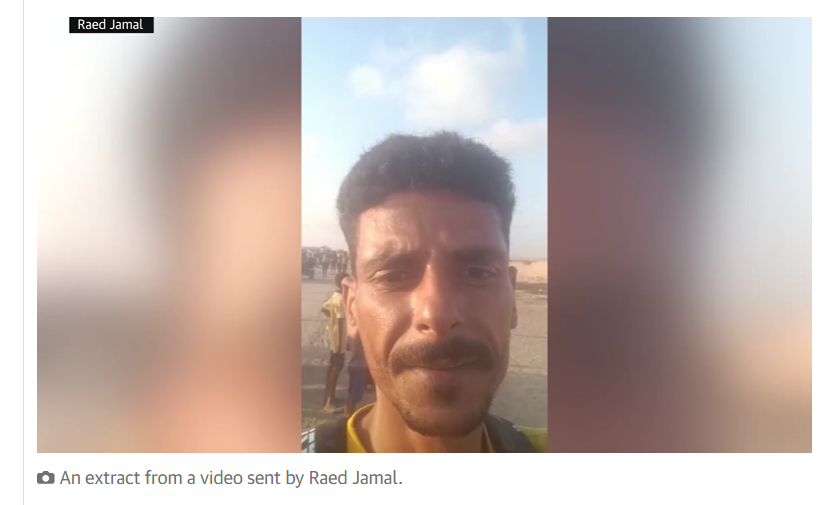
The GHF sites – Tal al-Sultan, Saudi neighbourhood, Khan Younis and Wadi Gaza – are located in evacuation zones, which means civilians seeking food have to enter areas they have been ordered to leave. According to GHF’s Facebook page, the sites remain open for as little as eight minutes at a time, and in June the average for the Saudi site was 11 minutes. These factors have led to accusations from NGOs that the system is dangerous by design. The Unrwa chief, Philippe Lazzarini,
has said “the so-called mechanism … is a death trap costing more lives than it saves.” The system favours the strongest, so it is mostly men who travel along the designated routes. Then they wait – often for hours – for a centre to open. Finally, there is a dash into the centre of the zones and a scramble to grab a box.
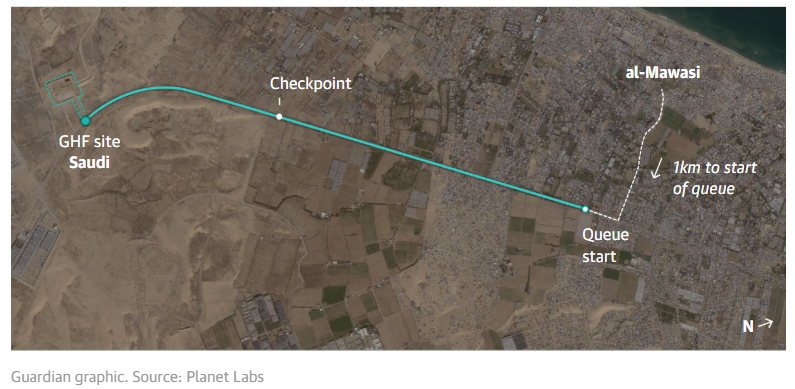
At every stage, those seeking aid pass Israeli tanks and troops, as quadcopters fly above. In another clip shared by Jamal he ducks as bullets pass overhead. “We have purged our hearts of fear,” Jamal says of his near daily walks to the site. “I need to bring food for my children so they don’t die of hunger.”
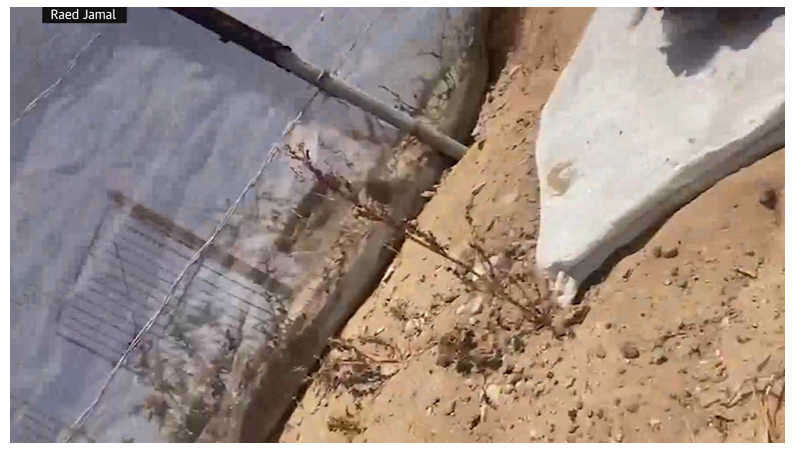 A new system, and near daily deaths
A new system, and near daily deaths
GHF, a startup organisation with no experience of distributing food in complex conflict zones, employs US mercenaries at the sites, which opened in May. They replaced 400 non-militarised aid points run under a UN system that Israel claimed had to be shut down because Hamas was diverting aid from it. No evidence for this has been provided.
Since May, more than 1,000 people have died while seeking food from the centres and other humanitarian convoys, according to the UN.
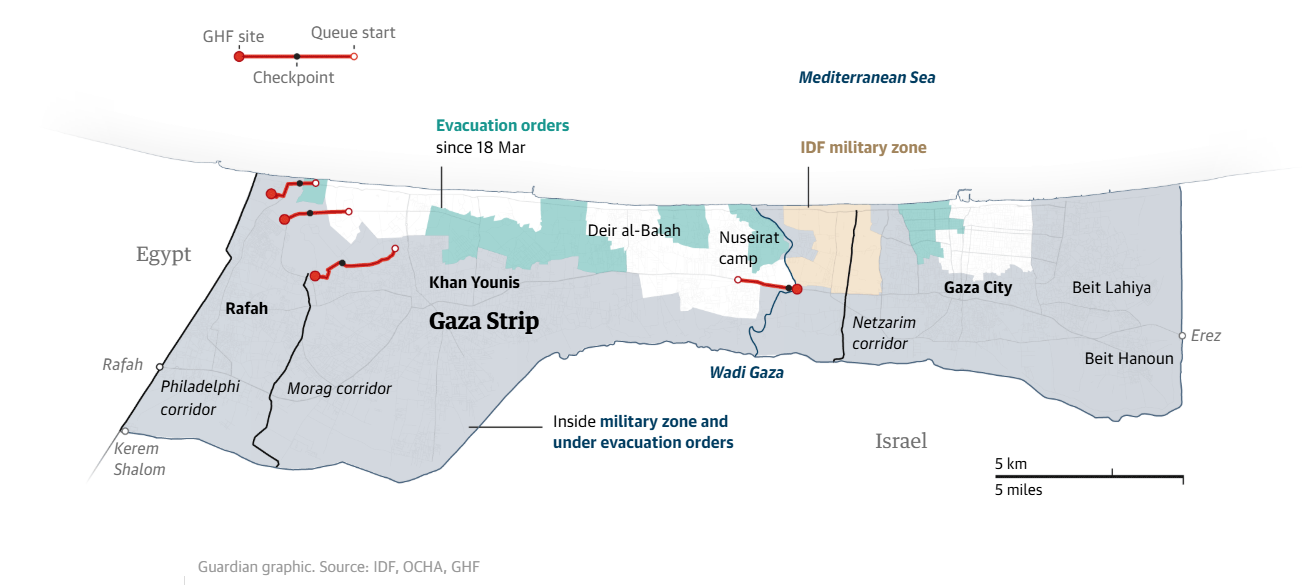
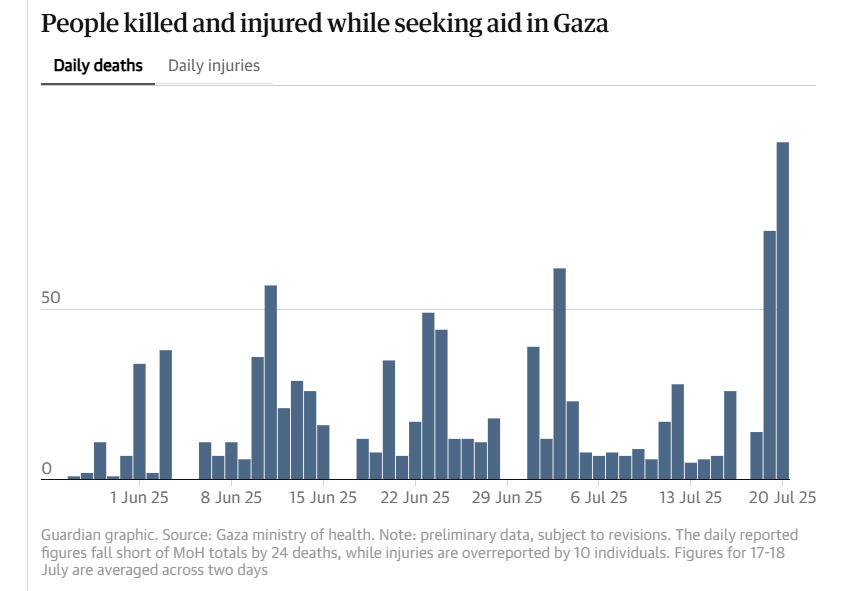
snip






